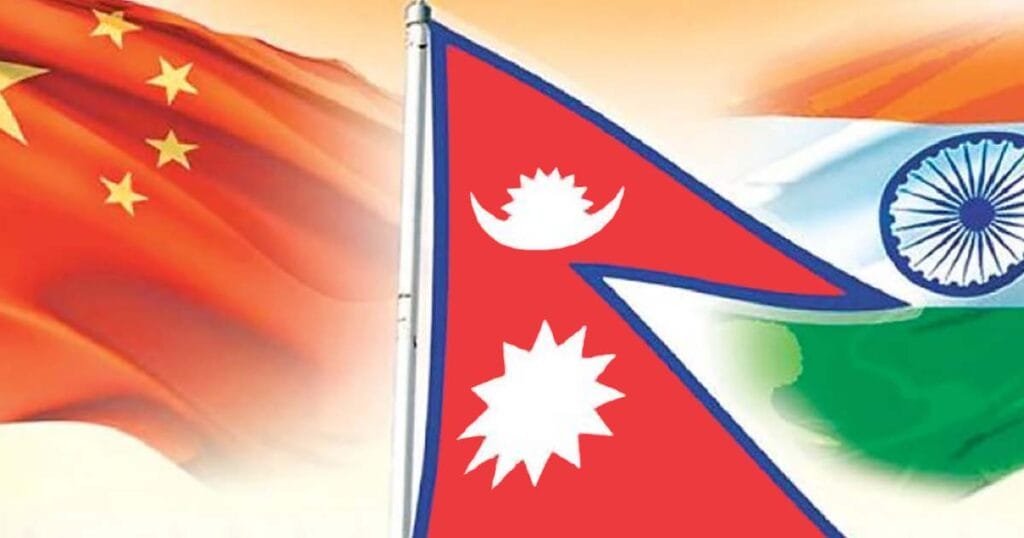- Nepal carefully balances ties with India and China, leveraging China’s Belt and Road Initiative while preserving cultural and economic links with India.
- Historical ties with India endure despite border disputes like Kalapani, with ongoing efforts for resolution through dialogue.
- China’s influence grows with projects like the China-Nepal railway, offering benefits but raising debt and sovereignty concerns.
- Prime Minister Oli’s policy seeks economic growth through balanced partnerships while ensuring Nepal’s sovereignty.
Nepal, a small but strategically significant nation, is navigating a challenging balancing act between its two powerful neighbors, India and China. As Nepal deepens economic ties with China through initiatives like the Belt and Road Initiative (BRI), it continues to grapple with historical and cultural ties to India, alongside ongoing security concerns.
Nepal and India share a deep-rooted history of cultural, religious, and economic connections. Their close ties have been shaped by shared Hindu traditions and centuries of cooperation. India has traditionally been Nepal’s largest trading partner, playing a key role in developing Nepal’s infrastructure, including roads, hydropower, and transportation networks.
However, recent years have seen tensions rise, particularly over border disputes. The Kalapani and Lipulekh regions remain contentious, with both nations claiming these territories. In 2019, Nepal issued a new map including these areas, following India’s inauguration of a road through Lipulekh, which Nepal viewed as a violation of its sovereignty.
Despite these disputes, both countries have expressed a commitment to resolving issues through dialogue. India’s role in Nepal’s economic development and the two countries’ cultural ties ensure that their relationship remains vital.
China’s Growing Influence in Nepal
China’s presence in Nepal has expanded significantly, particularly since Nepal joined the BRI in 2017. This initiative promises Chinese investments in infrastructure projects like roads, railways, and hydropower. These projects offer Nepal opportunities to diversify its economy and reduce its traditional dependence on India.
One key development is the proposed China-Nepal railway, which could reduce Nepal’s reliance on Indian trade routes. However, this has raised concerns in India, which views China’s growing influence in Nepal as a threat to its strategic interests.
For Nepal, engaging with China presents economic benefits but also risks. Chinese loans for infrastructure projects often come with high financial costs, raising concerns about debt sustainability. Nevertheless, Nepal sees its partnership with China as a way to assert greater independence in its foreign policy.
Prime Minister Oli’s Foreign Policy Approach
Prime Minister Khadga Prasad Sharma Oli, who returned to power in 2024, has played a central role in shaping Nepal’s foreign relations. Oli has prioritized strengthening ties with China, focusing on infrastructure and economic partnerships under the BRI.
At the same time, Oli has emphasized Nepal’s commitment to its relationship with India. His government has reassured India that Nepal values their shared history and cultural ties. This diplomatic balancing act is crucial for Nepal as it seeks to benefit from both neighbors without alienating either.
Nepal faces significant economic challenges as it balances its partnerships with India and China. India remains Nepal’s largest trading partner, accounting for nearly two-thirds of its trade. However, China’s investments through the BRI offer Nepal a chance to diversify its economy and improve infrastructure.
On the security front, Nepal’s 1,850-kilometer border with India underscores the importance of their defense cooperation. Meanwhile, China’s increasing influence in the region adds complexity to Nepal’s security environment. Maintaining neutrality and avoiding being drawn into the geopolitical rivalry between India and China is critical for Nepal’s stability.
Navigating Diplomatic Pressures
Nepal’s leaders must carefully manage relationships with both India and China to safeguard the country’s sovereignty. The government’s diplomatic strategy involves leveraging economic opportunities from China while maintaining strong ties with India.
Border disputes with India and concerns about political interference from China add to the complexity of Nepal’s foreign policy. Ensuring a balanced approach will require skillful diplomacy and a commitment to Nepal’s national interests.
The Path Ahead
Nepal’s ability to navigate the competing influences of India and China will shape its future. By maintaining a neutral stance and focusing on economic and social development, Nepal can position itself as a key player in South Asia.
The country’s success in this balancing act will be critical not only for its own growth and stability but also for peace and cooperation in the region.
Discover Nepal’s strategic balancing act between India and China. Learn how Nepal manages its ties with India through historical and cultural connections while leveraging China’s Belt and Road Initiative for economic growth.


